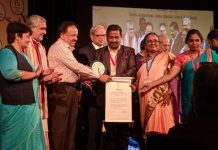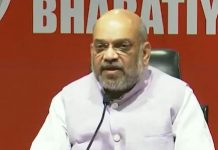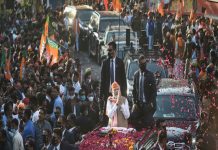Many scholars in New Delhi have serious reservations about Modi’s visit to Ukraine, especially following the recent successful advance of Ukrainian forces in the Kursk region of Russia. by Gopal Misra
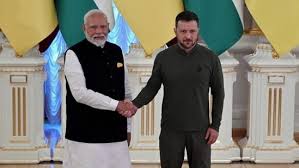
Prime Minister Narendra Modi’s visit to Ukraine during the third week of August, immediately after his visit to Moscow, has triggered debate among his supporters as well as his detractors. For his admirers, Modi has emerged as an apostle of peace, and for the detractors, the visit was done to please Washington.
The truth may never be revealed, but the hectic tour of Poland before visiting Ukraine by a 10-hour train journey reaffirms the theatrical style of the Indian politicians, especially prime ministers, from Atal Bihari Vajpayee to Modi, seldom missing any media coverage. Admittedly, Modi has excelled his predecessors.
It is yet to be ascertained how much political mileage Modi would gain in the country’s complex political horizon. A low-key or little response of the scholars of foreign and strategic affairs indicate that the Modi establishment has to make efforts to convince that it was not just one of the ‘aimless’ foreign sojourns he is believed to be fond of. They are also to understand the relevance of his two confidants, External Affairs Minister S. Jaishankar and the National Security Advisor, Ajit Kumar Doval, during this much-trumpeted tour. The domestic media as usual was seen describing Modi, an invincible political icon, as the messiah of peace, but the media coverage lacked any serious analysis of the impact of this high-profile visit.
An opportunity wasted
It is being stated that instead of traveling by train, if Modi and his team could have opted to travel by an aircraft to reach Kieve, the capital of Ukraine, they could have given more time for discussing better bilateral ties with the host country. They could be in Kiev only for seven hours.
During this visit, India could have offered jobs to a number of highly qualified Ukranians, who might prefer to serve in India than migrating to other countries.
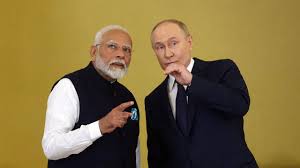
It is being asked how far the visit could really persuade the leaders of the war-ravaged country engaged in a fratricide war with Russia, since February 24, 2022 for an immediate ceasefire. The Chinese have already asked the Ukrainian leadership to explore for genuine peace instead of becoming a proxy of the West.
It is being alleged that Ukraine has become a victim of an international conspiracy. Initially, the US and its allies used their proxies against the people of the Russian speaking areas; thus finally provoking Russia to invade Ukraine.
Moscow, which was denied entry in NATO, was perturbed by the expansion of this defence alliance during the past 10 years, especially focusing on former members of the Warsaw Pact in the region, including Poland.
Alarmed by the reports that Ukraine’s present leadership is negotiating for a NATO membership, the Russian finally attacked Ukraine to protect the Russian speaking regions.
The casualties in the ongoing war has caused an unprecedented human tragedy for the first time in the post World War-II years. It is estimated that Russian forces have lost nearly one lakh soldiers, and Ukraine has lost nearly 40,000 lives and more than 22000 have been left wounded. A large number of Ukrainians have become refugees in various countries in Europe.
The visit of the Modi-led high powered delegation to Poland could have become more meaningful, if a detailed homework was done before the visit. Few are aware that like India, Poland too has suffered partitions.
It may be recalled that in 1939, the USSR and Nazi Germany had signed a secret agreement known as the Molotov-Ribbentrop pact, thus dividing the Polish territories among themselves. The agreement could not last long, when Nazi Germany invaded the USSR. Again, Poland suffered when the USSR got substantial Polish territories as the zone of its influence.
It is hoped that in future before planning such visits, the Indian foreign office would be given adequate time for issuing related articles and curtain-raisers.
À la Don Quixote
Narendra Modi’s high- profile recent visits to Russia, Poland and Ukraine revealed that he appeared to be in a hurry to pick up the gauntlet like Don Quixote, the knight errand, in a hurry to destroy the demon. He also believes like the legendary hero, thanks to the country’s servile media, that he is a warrior par excellence. The continuous propaganda of projecting him as an invincible hero, Modi finally finds himself attacking the huge windmills instead of attacking the demons.
There is no need to unnecessarily focus on Modi in the Indian media and social platforms. Being a PM, he is entitled to be the center figure in such missions.
Decisive battle of Kursk
Many serious scholars in New Delhi may have serious reservations regarding Modi’s visit to Ukraine, especially after the successful penetration of the Ukrainian forces in the Kursk region of Russia. During the August-September of 1943, the USSR forces comprising the Ukrainians had trounced the army of Hitler’s Germany. Later, Moscow had gifted Cremea to Ukraine for its supreme sacrifices during World War-II.
Eighty one years later, the region is again facing a fierce battle; this time between the brothers, the Russians and the Ukrainians. It is quite well known that Cremea was annexed following the reports that the US-led western powers were hatching a plot to encircle Russia by enrolling a number of Eastern European countries in NATO.
Russia was also upset that the US-led West succeeded in ousting pro-Russian politicians in the Ukrainian election. They also ensured that an anti-Russian regime under the leadership of Vladimyr Zelenskyy, a comedian-turned-politician, was installed in Ukraine.
During the Zelenskyy regime, the repression against the Russian speaking people continued.
It is widely believed that Modi’s visit is taking place at a time, when the Ukrenians have penetrated quite deep in the Kursk region of Russia. With this success, Ukraine has an upper hand in this ongoing conflict. However, it might escalate the conflict beyond Donetsk and Luhansk. It means the Ukrainian forces might face much more aggressive challenges from Moscow in future.
Most of the military experts are tight lipped about the possible Russian response to the Kieve’s daring decision to expand the war theater. It is not known what exactly transpired between Narendra Modi and the Ukrainian leaders. Since Modi has met the Russian President Vladimir Putin before visiting Ukraine, he might have advised Zelenskyy not to be too elated by the success in capturing a large part of the Kursk region. This battle-front success should not be used as a bargaining point to get back the Russian-occupied territories of Ukraine.
The Chinese proposal
The peace proposal of Beijing has already been communicated to Zelenskyy, which calls for an immediate ceasefire. It also suggests that the areas under the Russian occupation should be allowed to decide about their future, whether the people living in the region want to remain with Ukraine or want to join Russia.
It may be recalled that the people have been demanding to rejoin Russia since the 1990s, when the USSR was fragmented and Ukraine became a new country. However, the successive Russian governments didn’t concede the demand. The picturesque Cremea was annexed only in 2014, when the West had unleashed the agenda of weakening Russian influence in the region.
Despite the gloomy picture of the current situation, if the concerned parties realize the futility of war in the future, they may accept Modi’s olive branch, leading to peace.









